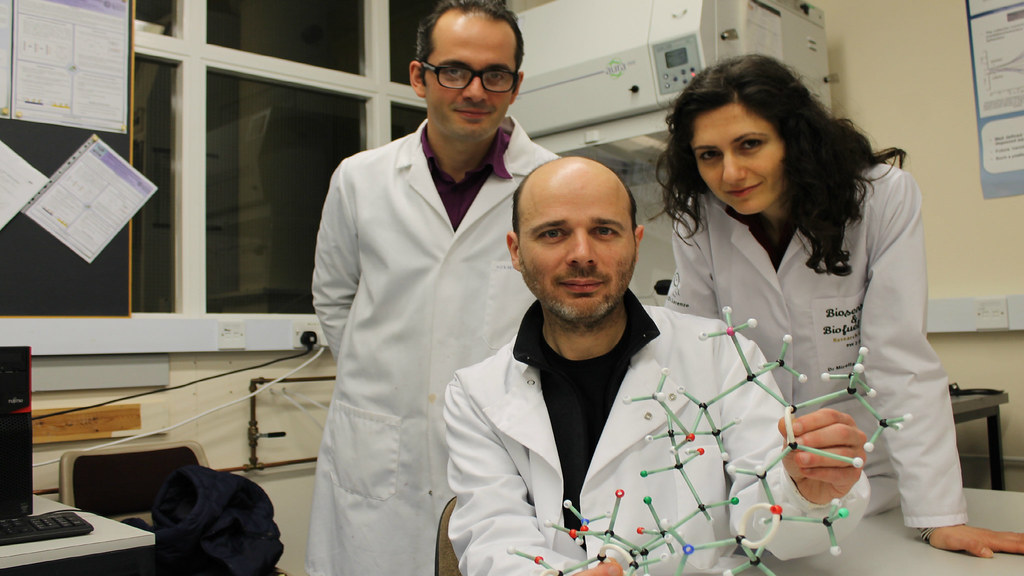Preventing kinase over-activity
The ‘PhosphoSense’ technology screens compounds for use in drugs and has produced a new way of detecting the activity of enzymes called kinases.
In normal healthy human cells, kinases regulate a number of important biological processes important for survival. However, when kinases become over-active or disregulated, it can cause a range of life-threatening diseases such as cancer, autoimmune disorders, Alzheimer’s and diabetes.
This patented technology will allow pharmaceutical companies to measure simultaneously a large number of compounds and select which one can be developed into drugs to fight against diseases.
The device was developed at Bath by researchers Dr Pedro Estrela and PhD student Nikhil Bhalla in the Department of Electronic & Electrical Engineering, Dr Mirella Di Lorenzo in the Department of Chemical Engineering, and Dr Giordano Pula in the Department of Pharmacy & Pharmacology.
Revolutionising drug discovery
Dr Giordano Pula, Lecturer in the Department of Pharmacy & Pharmacology said: “This technology has the potential to change the drug discovery process as we know it and facilitate the development of new drugs for diseases like cancer, stroke and dementia.
“The simplicity is the strength of this technology. This discovery significantly simplifies the analysis of protein kinase activity and frees it from the use of radioisotopes or antibodies.”
“The free flow of information between departments at the University of Bath promoted this collaboration and the work leading to this discovery, which was a truly interdisciplinary endeavour.”
The work, published in the Nature Group journal Scientific Reports, explains how this technology identifies potential new drugs by combining semi-conductor devices that measure protein kinase activity by calculating pH change, which signifies the effectiveness of a potential drug compound in blocking kinase activity.
Industry collaboration
The research team are now looking to work with industrial partners to collaborate and develop the system to a prototype that can be used by the pharmaceutical industry, leading to a faster and cheaper way of discovering new and potential life-saving drugs.
The full open access paper ‘Protein phosphorylation detection using dual-mode field-effect devices and nanoplasmonic sensors’ can be viewed at http://www.nature.com/srep/2015/150303/srep08687/full/srep08687.html.

